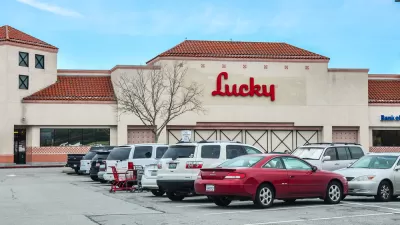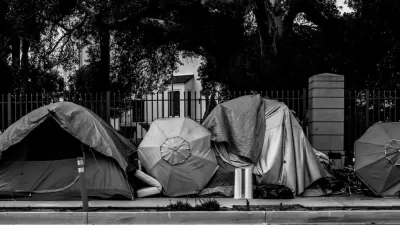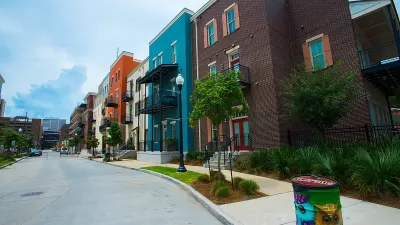It’s time to rewrite California’s building and planning codes for the 21st century, says architect Mark Hogan.

California's obstacles to addressing climate change and the housing shortage include its own code, a piece in BOOM argues.
Layers of code create what Hogan calls a "hairball"—a term borrowed from programming—in which, ultimately, "each bit of code can be used to stop another from doing its work." He writes:
Some of California’s own largest policy initiatives are at odds with each other … Reducing VMT requires density, but density is nearly impossible to achieve while constructing net-zero buildings.
To tease out some of the threads making up the hairball of code, Hogan tackles the history of planning, zoning, and building codes across California since the late 19th century. Though they generally arose independently in each city, early codes were defined by the times: they sought to counter the conditions of early American cities through ample space, separation from industry, and, of course, racist exclusion.
Though planning goals have changed, in many cases, codes have not kept up. Now, Hogan urges, "[in order to] create affordable cities, responsive to a changing climate and prudent with limited natural resources, we may need to rewrite the rules from scratch with a new set of goals in mind."
For one, he suggests semi-dense urban development—think low-rise apartments or in-law units:
Disallowing this kind of gentle medium density in the name of preserving neighborhood character does a disservice to those who arrived here or were born too late to afford a single-family home within commuting distance of their jobs. It also fails to recognize that making communities more walkable and sustainable will improve neighborhood character over time, not diminish it.
FULL STORY: Re-Coding Planning

Planetizen Federal Action Tracker
A weekly monitor of how Trump’s orders and actions are impacting planners and planning in America.

San Francisco's School District Spent $105M To Build Affordable Housing for Teachers — And That's Just the Beginning
SFUSD joins a growing list of school districts using their land holdings to address housing affordability challenges faced by their own employees.

The Tiny, Adorable $7,000 Car Turning Japan Onto EVs
The single seat Mibot charges from a regular plug as quickly as an iPad, and is about half the price of an average EV.

Austin's First Single Stair Apartment Building is Officially Underway
Eliminating the requirement for two staircases in multi-story residential buildings lets developers use smaller lots and more flexible designs to create denser housing.

Atlanta Bus System Redesign Will Nearly Triple Access
MARTA's Next Gen Bus Network will retool over 100 bus routes, expand frequent service.

Toronto Condo Sales Drop 75%
In two of Canada’s most expensive cities, more condos were built than ever — and sales are plummeting.
Urban Design for Planners 1: Software Tools
This six-course series explores essential urban design concepts using open source software and equips planners with the tools they need to participate fully in the urban design process.
Planning for Universal Design
Learn the tools for implementing Universal Design in planning regulations.
Smith Gee Studio
City of Charlotte
City of Camden Redevelopment Agency
City of Astoria
Transportation Research & Education Center (TREC) at Portland State University
US High Speed Rail Association
City of Camden Redevelopment Agency
Municipality of Princeton (NJ)





























